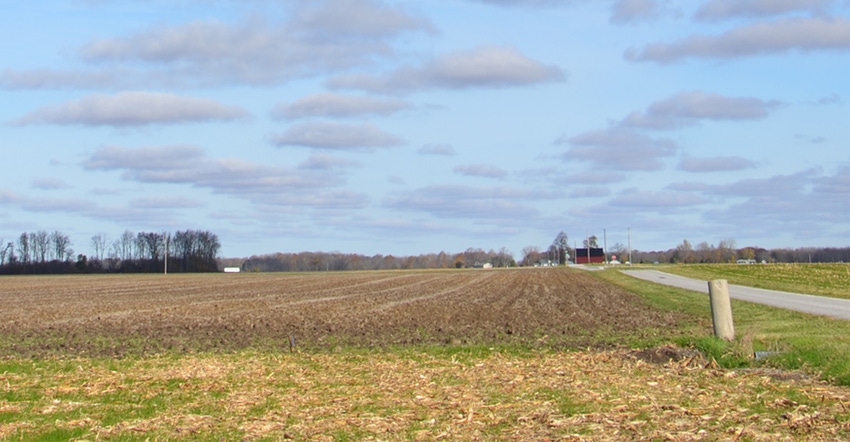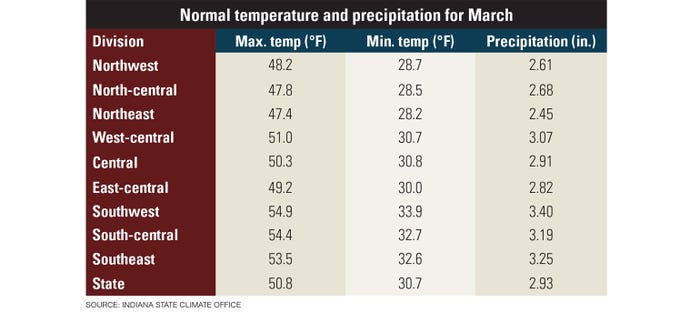
According to maps from the National Oceanic and Atmospheric Administration’s Climate Prediction Center, Indiana has an equal chance to be above, below or normal in regard to temperatures in March. That’s the word from Ken Scheeringa, associate Indiana state climatologist.
There is a 33% to 40% chance that Indiana will be above normal with respect to precipitation, he says. That translates into a reasonable chance that precipitation will average above normal in the coming weeks across most of Indiana.
Whether the precipitation is rain or snow will depend on which way the temperature trend winds up going. If it goes cooler than normal, there might be more snow. However, snow totals tend to trail off across the state on average in March. Feb. 28 is actually the end of winter, as climatologists view it.
The best guess at this time is that warmer-than-normal temperatures will continue in Southern states, particularly in the Southwest, according to recent maps issued by NOAA. The primary area of the U.S. with the best chance to see above-normal precipitation in the near term is the Great Lakes states.
Precarious forecast
Climate Prediction Center forecasters are less confident than usual in their outlooks for the coming spring months, Scheeringa explains. The weak La Niña that was in effect this winter appears to be ending. It also appears that the neutral phase of the El Niño/La Niña cycle will develop next. Once this phase takes over, it will probably last through spring. The El Niño/La Niña cycle refers to the state of sea surface temperatures in the tropical Pacific Ocean. Temperature changes affect atmospheric pressure, which in turn affects circulation patterns around the globe. This cycle is one of the major factors that determines weather patterns in the Midwest.
Major weather patterns often change during the type of transition now underway, Scheeringa confirms. However, which way they will go next is very uncertain at this point. With no clear signal to the next atmospheric cycle, forecasters rely more on persistence: Use what is happening currently as the forecast until an obvious change takes place.
That may be one reason why a forecast of equal chances for temperature trends and more precipitation than normal became the official forecast for March. It continues a trend that settled over Indiana this winter.

About the Author(s)
You May Also Like




